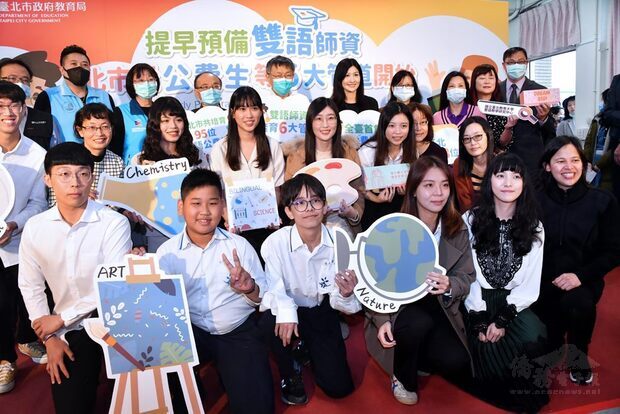
Beginning in 2017 with 2 schools conducting pilot projects, Taipei's bilingual education curriculum continued to grow – from 6 schools in 2018, to 12 schools in 2019, and finally to 28 schools in 2020. While the original plan was 49 schools in 2021, in response to parents' anticipation of having more bilingual schools, the number has been increased to 51 schools.
However, the objective may be difficult to achieve because there are only 173 bilingual teachers for Taipei City. Unlike teaching material which can be procured in a variety of ways, Ko remarked that securing qualified teachers is the biggest challenge. Even if the city government adjusts its terms for annual new hires and require that 40-percent of new teachers must have bilingual education capabilities, there is still not enough people.
To tackle this issue, the city will focus on 6 major channels to nurture bilingual educators of future generations. First, it plans to work with colleges and universities to offer bilingual teacher training programs for public-funded students. The schools include University of Taipei, National Taiwan Normal University, National Taipei University of Education, National Chengchi University, National Taichung University of Education, National Chiayi University, and National Kaohsiung Normal University. The second avenue is to ask academic exchange foundations to hire foreigners who are native English speakers to assist in teaching. The third way is to modify new teacher recruit standards to emphasize bilingual capabilities, as mentioned before. The fourth approach is to design bilingual teacher training programs to train talents, while the fifth way is to implement on-the-job training for existing teachers to boost their languages capabilities. Finally, with 28 schools involved with the bilingual program, the optimized deployment of teachers with bilingual capabilities among city schools is also an option to be considered.
The mayor hopes that Taipei's approach not only offers bilingual education, but also international education. He pointed out that there are many local high school students who take classes over the internet with their peers in the US, Canada, or European countries, working their way towards a second diploma. Hopefully, this policy will make Taiwan more competitive in the global scene.
Ko pointed out that Singapore invested 28 years into the realization of bilingual education, though he hopes that Taiwan will not need to take as long. For today's student, he believes that learning 3 languages – Chinese, English, and Programming – is extremely important. He also took the opportunity to express his gratitude to partner schools and the staff from the Department of Education.